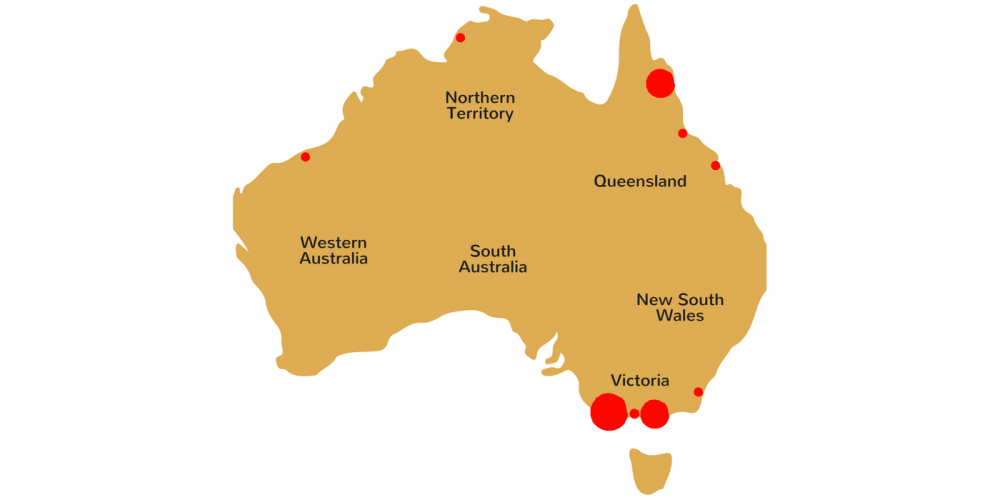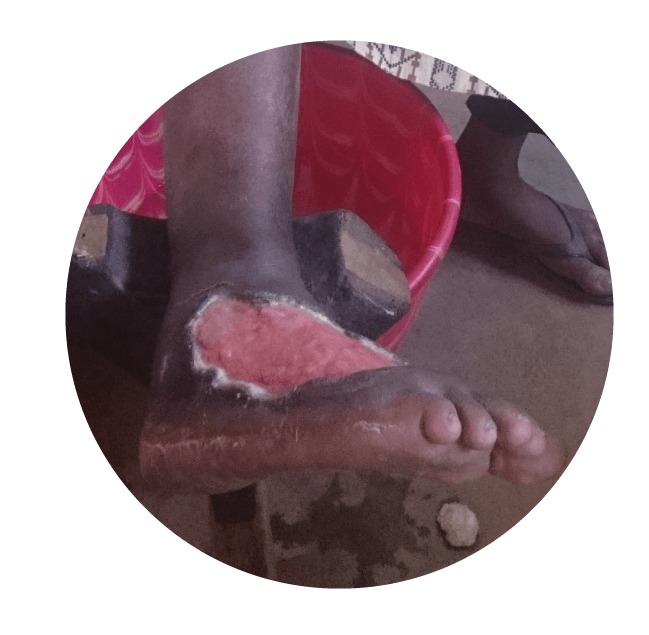KIT Blog
What you need to know about Bairnsdale Ulcer (Buruli Ulcer) in Australia
-
 Admin
Admin
- Apr 20, 2018
- Australia,
- Understanding Neglected Tropical Diseases
Bairnsdale Ulcer, aka Buruli Ulcer, is on the rise in Australia. Here are some things you will need to look out for:
6 Key Facts – Bairnsdale Ulcer (Buruli Ulcer) in Australia:
- 275 cases were diagnosed in Australia in 2017 – this is a 300% increase in case diagnosis compared to 2014 when just 89 were diagnosed, and a 50% increase since last year (182 cases).
- Coastal areas of Mornington & Bellarine Peninsula are hot spots – Most cases in 2017 were diagnosed in the coastal areas of Victoria around Mornington Peninsula and the Bellarine Peninsula.
- Transmission is unknown – There is currently no clear understanding how it spreads, although it is suspected through mosquitoes.
- 3-5 months incubation – the average time for the onset of the disease following exposure based on one Victorian research study1 But Buruli Ulcer symptoms can manifest as early as 4 weeks. Therefore holiday-goers to the above areas over summer 2017 could now be seeing the effects of Buruli Ulcer
- Permanent disability if left untreated – Buruli Ulcer can affect the skin and even the bones, leading to permanent disfigurement and needing major skin grafts
- $14,000 – the potential costs for treatment with antibiotics in Australia, as the drugs are not covered by the Pharmaceutical Benefits Scheme
Symptoms of Bairnsdale Ulcer (Buruli Ulcer)1,2,3
It is important that someone with the signs and symptoms of Buruli ulcer is diagnosed as soon as possible. This will reduce the chance of developing permanent disfigurement or needing major surgery as the disease continues to spread. If you suspect a number of these below symptoms, then The Leprosy Mission Australia recommends you contact your general practitioner (GP) for further advice:
- Buruli ulcer often starts as a painless swelling (nodule)
- The spot looks like a mosquito or spider bite that continues to enlarge (usually on the arms or legs)
- The spot is swollen, with some localised pain, swelling and can result in fever
- The spot begins to peel, discolour, becomes crusty and scabs without healing
- Any scab then comes away leaving an ulcer – it could be as early as 4 weeks but can be many months after exposure or after the nodule/spot has started to develop
- The ulcer is painless, and continues to enlarge over many weeks without necessarily any other signs of infection (e.g. fever)
- After completing a course of standard antibiotics the ulcer does not heal or reduce in size.
4 top questions to ask your GP about Buruli Ulcer
Below are 4 key questions to ask you GP about diagnosing Buruli Ulcer. If you suspect your GP does not appreciate the nature of Buruli Ulcer, or is sceptical after seeing or describing a number of the above symptoms presented then consider getting a second opinion:
- What is your understanding of Buruli Ulcer and how it manifests?
- How would you rule out whether this spot or ulcer is indeed not a Buruli Ulcer?
- Have you ever diagnosed someone with a Buruli Ulcer? If so, how was it different to the symptoms presented here?
- If unfamiliar with the disease, who would you recommend for a second opinion regarding the diagnosis or to rule out the possibility of Buruli Ulcer?
The Leprosy Mission Australia supports a project in Nigeria that targets Neglected Tropical Diseases (NTD) like Brainsdale Ulcer. Click here to learn more about the project.
The Leprosy Mission Australia does not provide medical advice. This information should not be treated as professional medical advice. If you are concerned, please see your doctor.













